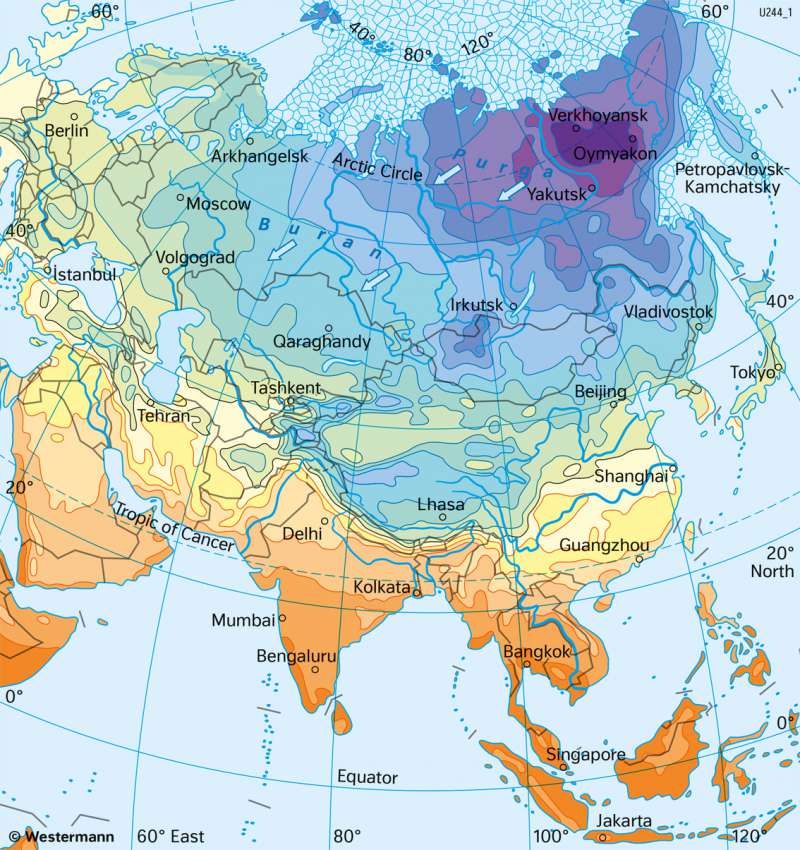Asia - Temperatures in January
Agriculture and climate
978-3-14-100890-6 | Page 121 | Ill. 2

Overview
The temperature maps of Asia show the strong spatial and also seasonal differences in the climate of Asia through the increase in latitude. While the average temperature in Indonesia in January is over 25 °C, in the interior of Northeast Asia temperatures of minus 45 °C and less occur. Eastern Siberia is in effect the cold pole of the Earth, because of the strong thermal continental climate.
Cold and warm temperature extremes
Characteristic of the winters in northern Asia are the high average wind speeds of seven to nine metres per second and peak values of 40 metres per second are sometime reached on the open tundra. Through the interaction of air temperature and wind-cooling or "windchill", the world's lowest temperature values are recorded.
The cold and stormy north wind is called a "Buran", which can be seen in winter in Kazakhstan, Mongolia, Northwest China, eastern Russia ,and western Siberia. Similarly, it occurs in North American blizzards in the sequence of cold polar air advances and is frequently associated with heavy snowfalls and snowdrifts. In the tundra of Siberia, a "Buran" is also called a "Purga".
In July, temperatures in Central Asia are over 10 °C on a monthly average. The 0 °C isotherm is now northwards of the melting ice of the Arctic Ocean. The isotherms have turned their orientation: from a more meridional direction in the winter (January) to a more zonal direction in summer. The 20 °C isotherm is located in Kazakhstan, north of the 50th Latitude, which means that the summer temperatures are at a similar level as in Central and Northern Europe, or even exceed it. However, night frosts are always to be expected the same time.
The summer heat in the Arab region is particularly significant – the temperatures increase at an average spread of over 30 °C. In the area of the tropical Southeast Asia daily climate, the temperatures are governed by little seasonal variation. The height dependence of temperature is evident in the area of the Himalayas. The high mountain area is shown, both in summer and winter, as a cold "island" on the map.




